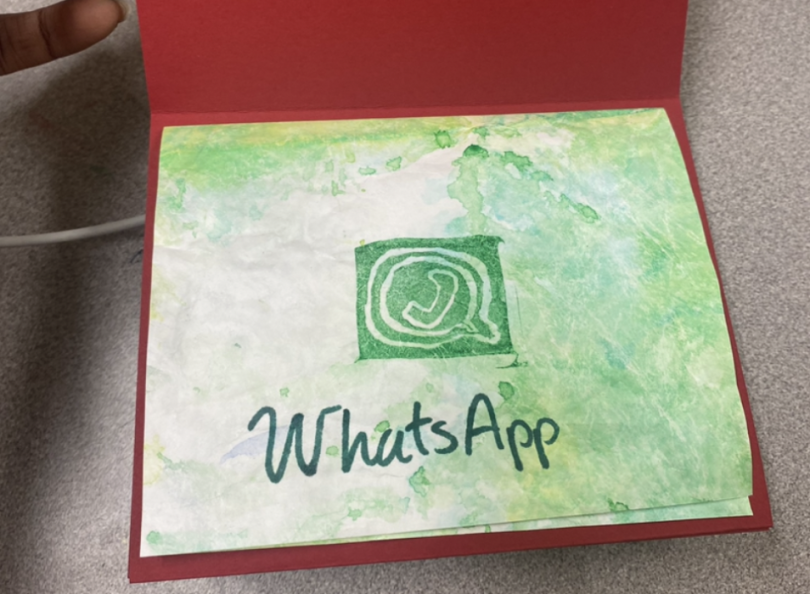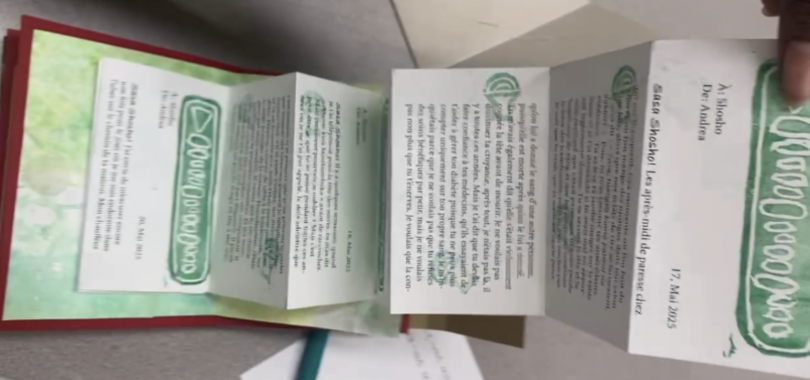
Folding Memories: Creating a Final Project in the Book Arts Workshop
Tucked away in the cozy basement of Baker-Berry Library lies one of Dartmouth's most creative hidden gems: the Book Arts Workshop. I'd walked by the signs before without knowing what treasures were down there. But thanks to my final project for FREN 70: Francophone Literature, I finally had the opportunity to pop in—and the experience transformed the way I think about creative writing, language, and the physicality of books.
For our final, we were encouraged to experiment with form in our own creative writing and interpretations of the course material. I decided to create an accordion-style book of fictive audio message transcripts sent to my Shosho (grandma) via WhatsApp, as we communicate most frequently through this app while she's in Kenya and I'm in the US. The project took the form of a deeply personal and imagined conversation that explored diasporic voice, memory, and intimacy in the digital age. I mostly wrote in French and included lines in Swahili, as this is the language I mostly speak to my grandma in. But bringing this concept to life required more than just writing—it meant learning an entirely new set of hands-on skills and spending five immersive days in the Book Arts Workshop.

The process began with InDesign, a tool I hadn't touched before but quickly came to appreciate. Thankfully, Dartmouth students have access to the full Adobe Creative Cloud suite, and I used InDesign to format my writing into precise dimensions that would suit the accordion fold. This part alone taught me so much about how layout can shape the reading experience—where a line breaks, how a margin breathes, and how rhythm is visual as much as verbal.
Once the digital layout was complete, I printed it, and the real magic began. I assembled my book by cutting and folding it into a long, continuous strip that opened up like an accordion. I wanted to simulate the feel of listening to a stream of audio messages, so I created stamps of audio waveforms, play buttons, and sound icons to decorate the pages by carving the desired shapes into blocks of rubber and dipping them in ink. These visual cues, like subtle sound marks, enhanced the digital illusion within the tactile world of the printed page.

Earlier in the term, we had two in-class training sessions at the Book Arts Workshop, which laid the foundation for this final project. In the bindery room, we learned how to assemble various book formats, from simple pamphlets to sewn bindings. In the letterpress studio, we experimented with setting metal and wood type on vintage presses—an incredible opportunity to work with century-old tools and reflect on the long history of publishing and communication.
This was my first time working in the Book Arts Workshop during my time at Dartmouth, and it opened up a whole new creative world. The staff were so supportive and knowledgeable, and the atmosphere encouraged exploration and play. One day, I was working on my project, and I even bumped into a friend who was simply there to make something creative during her study break! I came away from the project with more than just a final product—I gained an appreciation for the artistry involved in bookmaking and the possibilities of merging traditional craft with contemporary storytelling. I'm grateful that this course pushed me to explore the Book Arts Workshop, and I know it won't be my last time there.
















